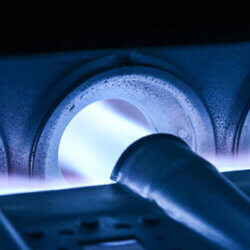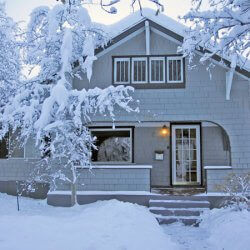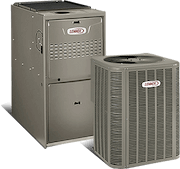The basement of your home gives you some much-needed extra space. You could use it for storage, or you could finish your basement and turn it into living space as well. The biggest challenge with making your basement livable, though, is extending the residential heating and cooling system to the basement. Most homes do not have heating and cooling in the basement. When you install an HVAC system, the technicians usually recommend a solution based on your existing square footage. If your basement was not included in this square footage from the start, it is even more difficult to extend the heating and cooling to this additional space. As such how to heat a finished basement becomes a major concern.
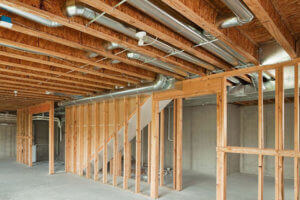
If you are planning to finish your basement or you need help improving the heating in your already finished basement, consult a St. Louis HVAC contractor to see what you will need. In St. Louis, call the experts at Galmiche & Sons at 314-993-1110.
How to Heat a Finished Basement – Steps and Tips
If you are thinking of finishing your basement and wondering how to heat a finished basement, you will probably need some additional equipment to accommodate the extra square footage. This might include an additional heater, ductwork, furnace, and so on. Below are some of the things to consider:
Installing Additional Ductwork in Your Basement for Heating
If you are simply extending your existing HVAC system to the basement, the first thing you will need is ductwork and vents for the basement. Ductwork connecting the HVAC to the basement along with vents and air returns will prepare the basement to receive air from the heater or air conditioner. But you may also need to increase the capacity of your air conditioner and furnace to accommodate the additional space. If you are getting a new heating and air conditioning system, you might want to choose a newer, more efficient model.
Choosing an HVAC unit with a zoning system is also a great idea since your entire house does not need the same amount of heating or cooling at the same time. The basement, for instance, may not be in use all the time, so the temperature there could be a few degrees lower than the rest of the house in winter. This could help you maintain comfort and save on energy bills as well.
Installing a Small Split HVAC System
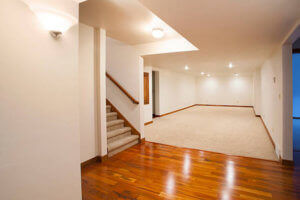
If you want to heat your basement separately and do not want to go through the trouble of adding ductwork or an additional furnace, you could opt for a split basement HVAC unit instead. This works great if your basement is at or above ground level on at least one side. With a mini-split heating system, you will be able to control the temperature of your basement independently and can turn it off when you are not using the space. It requires no ductwork or furnace, so it is a hassle-free solution as well.
Installing Electrically Heated Baseboards for Basement Heating
Another permanent solution to how to heat a finished basement could also be installing heated baseboards. These boards are heated by electricity and are an economical option too. Each baseboard heater will have its own control panel, and you can independently control the temperature of your basement. Just make sure not to cover the boards with furniture or curtains, as that can reduce their heating efficiency.
Ask an Expert How to Heat a Finished Basement
If your basement project is underway and you are still wondering how to heat your finished basement, you can always ask an HVAC expert in St. Louis. Galmiche & Sons has been in the air conditioning and furnace installation and maintenance business since 1950. Consult our heating and air conditioning experts to learn more about what options you can explore.



